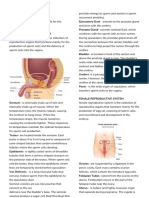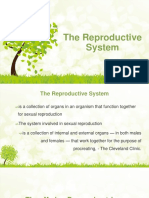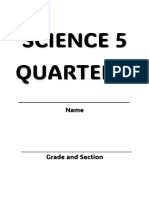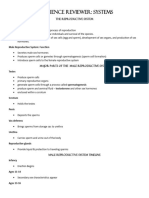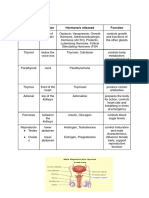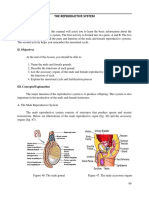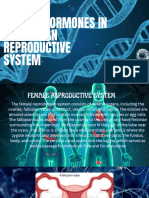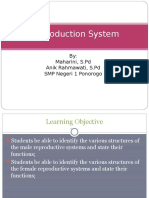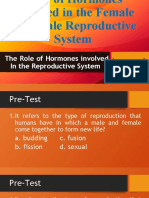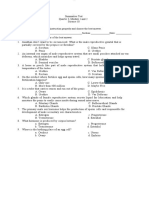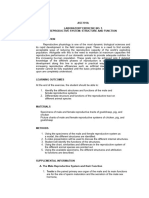0% found this document useful (0 votes)
90 views4 pagesReproductive System Old Format
The document summarizes the male and female reproductive systems. It describes the key organs involved in each system, such as the testes, ovaries, uterus, and their functions. It also discusses puberty and how it is triggered by hormones like LH and FSH from the pituitary gland. These hormones stimulate development of secondary sex characteristics and the ability to reproduce. The menstrual cycle is summarized as well, outlining the phases a woman's body goes through each month.
Uploaded by
Robie SanaoCopyright
© © All Rights Reserved
We take content rights seriously. If you suspect this is your content, claim it here.
Available Formats
Download as DOCX, PDF, TXT or read online on Scribd
0% found this document useful (0 votes)
90 views4 pagesReproductive System Old Format
The document summarizes the male and female reproductive systems. It describes the key organs involved in each system, such as the testes, ovaries, uterus, and their functions. It also discusses puberty and how it is triggered by hormones like LH and FSH from the pituitary gland. These hormones stimulate development of secondary sex characteristics and the ability to reproduce. The menstrual cycle is summarized as well, outlining the phases a woman's body goes through each month.
Uploaded by
Robie SanaoCopyright
© © All Rights Reserved
We take content rights seriously. If you suspect this is your content, claim it here.
Available Formats
Download as DOCX, PDF, TXT or read online on Scribd
/ 4






